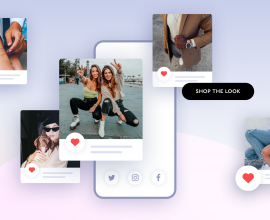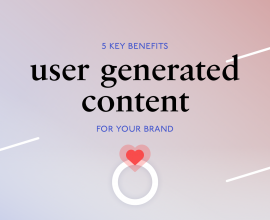You’ve decided to utilize user-generated content as a part of your marketing strategy, but what are the next steps?
Once you’ve identified the incredible benefits of user-generated content (UGC) and decided that it will be central to your marketing strategy moving forward, it’s crucial that you take the time to optimize your processes for collecting, promoting, and measuring the effects of that content. No matter how effective UGC is, it’s only as effective as you allow it to be. If you don’t know how to leverage it, why you’re using it, what objectives it will meet, and how to measure its performance, then UGC won’t do your brand or sales any good.
It is only with a solid strategy in place that you can make the most out of UGC, as it’s only through a strategy that you’ll be able to give it its best chance at working. Not only that, but the strategy will also give your marketers metrics to gage how successful it is. With that said, here are the 4 steps to creating a great user-generated content strategy.
Evaluate User-Generated Content For Your eCommerce Shop
The first thing to do when formulating a strategy is to consider why you’re making one in the first place. Deciding on a purpose gives your company something to keep top of mind, as an overarching guiding principle when approaching anything UGC related.
When coming up with a purpose it’s important to pinpoint just what you’re trying to achieve and why UGC is best-suited to achieve it. At this point it’s not about picking specific metrics and numbers, just honing in on the general direction of your UGC strategy.
The benefits of UGC have been widely published and range from building community to saving money on content creation. If you have customers creating great content featuring your brand, it should 100% be your priority to use it effectively.
Understand Your Audience
Having identified a purpose, the next step is to understand your audience. You have to understand which forms of social media they engage with most, what parts of your brand they most identify with, their demographics, their interests, and so much more.
Mostly importantly consider: how do they engage you with your store? For example, do they #hashtag more? Or do they @tag more? Do they tag your brand in posts on their feed or on stories, which disappear within 24 hours?
The more you know, the better. And the more you make it easy for them to make engaging with you organic, the more content you’ll amass. This is because you need to know how to motivate your fans to produce UGC, which of them will, and what kind of UGC they’re most likely to produce. It’s only through having a keen understanding of your customers that you can galvanize and utilize their content.
If your audience never uses hashtags, but always shares via a tag on stories, you can use this understanding to build your strategy. If your audience uses community hashtags (think Ole Henriksen’s #OleGlow) instead of one-off campaign hashtags, create something that will last.
Plan To Leverage UGC Across Platforms
Now that you’ve identified relevant UGC content, consider where you will deploy your UGC. While the obvious place is within social media, this content can benefit your shop across brand touch points.
A few examples? You can use UGC on your website, within your blog, on your product pages, and in email campaigns. Anywhere your potential customers engage with your brand is a great place to leverage UGC.
Set Goals
Your purpose and plans to leverage UGC will decide what you’re hoping to achieve and how you will use it. But, it’s through concrete goals that you’ll get there. For example, if the purpose of your UGC strategy is to grow awareness around your brand, then you have to set specific objectives that correspond to that purpose.
There are numerous indicators of increased brand awareness, from increased followers on your social media accounts to more website traffic and more social engagement, and so on. Thus, in this example, you would have to set ambitious but realistic numbers you would want to meet in those areas.
Another common UGC goal is to grow sales. Some corresponding indicators would be product page views, gallery views, add-to-carts, and checkouts. Just like with an awareness goal, you should set targets for each indicator. It’s critical you set such goals so that you have something substantive to work towards.
Examine and Adapt to UGC’s Performance
Finally, keeping your purpose, audience, and goals in mind, you then have to monitor your performance in relation to all three factors. Are you getting closer to your purpose with the UGC you’re receiving? More pertinently, are the goals you laid out closer to being met? Is the audience you were expecting to engage with your brand the most, doing so?
Depending on the answers to those questions, you’ll have to adjust your strategy. Perhaps a different segment of your audience than you expected has become your main UGC producer, so it’s worth pivoting your efforts to appeal to them. Perhaps you’ve already hit all the objectives you set, so you need to set new ones. The most important thing with a strategy is keeping it dynamic so it’s able to respond to whatever comes its way.




